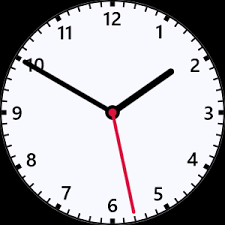 This is a good way to remember which way the clocks change at the end of March and the end of October. This Sunday, at 2.00 am Central European Time, in 70 countries, including most of Europe, Daylight Saving kicks in and we move our clocks and watches forward one hour. But when and why did this come about?
This is a good way to remember which way the clocks change at the end of March and the end of October. This Sunday, at 2.00 am Central European Time, in 70 countries, including most of Europe, Daylight Saving kicks in and we move our clocks and watches forward one hour. But when and why did this come about?
History
Introduced during the First World War in 1916, the idea then was to save coal supplies. Nowadays it’s about having longer days as daylight extends into the evening, and latterly, with the energy crisis, it’s more about cutting down on electricity consumption.
As for us here in Andalucía, where it currently gets light at around 7.15 am and darkness comes at 8.00 pm, we shall have to wait until 8.15 am for daybreak, yet sundown will be an hour later, giving us longer evenings.
Spain in wrong time zone?
By the way, did you know that the Spanish mainland is in the wrong time zone? Look at a map. Spain is on the same longitude as the UK, Portugal, Morocco and the Canary Islands.
In the past Spain was in the same time zone, Greenwich Mean Time (GMT), as these other countries. This arrangement persevered for 40 years, meaning Spain functioned on the same time as places like the United Kingdom, Portugal and Morocco.
However, just prior to the outbreak of the Second World War and during the last year of the Spanish Civil War, the nationalist Falangist forces attempted to move away from GMT to align themselves with Nazi Germany.
Though the move was ultimately blocked, and GMT re-established in 1939, it didn’t take long for Franco’s government to soon attempt the move once again.
It was changed by Franco as a favour to Hitler, so that Spain, officially neutral during the Second World War, would fall into line with German time. And it has never been changed back. Perhaps if it did, Spain would benefit from a more sensible working day, ie people would get up earlier and could start work earlier and finish earlier than the present 8.00 or even 9.00 pm. For example, most shops don’t open till 10.00 am, somewhat late compared to other advanced European nations.
Adopting ‘Nazi Time’
 On March 16th 1940, the clocks jumped from 23:00h to 00:00h to display the same time as Nazi Germany and other Nazi-occupied countries such as France and the Netherlands. This was an entirely politically motivated move to show support to the fascist government of Germany and showed no consideration for the natural cycle of the sun in Spain. According to the original 24-hour division of the world, Spain’s latitudinal position meant that GMT was the most natural time-zone for it to follow.
On March 16th 1940, the clocks jumped from 23:00h to 00:00h to display the same time as Nazi Germany and other Nazi-occupied countries such as France and the Netherlands. This was an entirely politically motivated move to show support to the fascist government of Germany and showed no consideration for the natural cycle of the sun in Spain. According to the original 24-hour division of the world, Spain’s latitudinal position meant that GMT was the most natural time-zone for it to follow.
Many in Spain believed that the clocks would eventually return to GMT when the war was over, yet this never happened.
An enduring anachronism
As a result, many believe that today Spain is living in the wrong time zone and that this historic move in 1940 is behind what is Spain’s relatively late schedule. Lunch breaks typically run from 2pm to 4pm while dinner is often not before 9pm or 10pm.
Some claim that living in the same time zone as Germany leaves Spain ‘out of sync’, possibly even leading to unhealthy lifestyles with late nights being the norm even for children.
Is there an intention to change?
Perhaps all this is about to change, as in 2016 plans were announced to return Spain to GMT, thereby restoring the country to its original time zone. This move may help Spain do more efficient business with other European countries by aligning its working hours more closely with those of its neighbours.
Epilogue:
Don’t forget to change your clocks and watches. Your mobile, tablet, laptop and computer should update automatically.
© The History Man
Tags: Canary Islands, Central European Time, clock, computer, daylight saving, Franco, Greenwich Mean Time, GMT, History Man, Hitler, Morocco, nazi, nazism, Netherlands, Portugal, time zone, United Kingdom, UK, watch